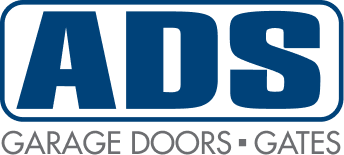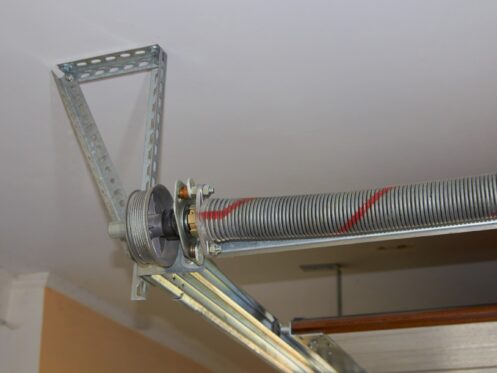Having a well-functioning garage door can help to make your home more functional and improve its aesthetic appeal. Unfortunately, with all the use that your garage door gets over the holiday season, it’s more prone to malfunctioning but problems can occur year round. We’re going to go over some of the most common signs that you have a garage door problem and how to go about fixing them below.
- Remote Issues: If your garage door doesn’t respond to the remote:
- Replace the remote’s batteries.
- If the problem persists, reprogram the remote according to the garage door opener’s manual.
- Faulty Sensors: When the door reverses unexpectedly:
- Clean the sensor lenses located near the ground inside the garage.
- Ensure both sensors are properly aligned.
- If issues continue, contact our professionals to replace the safety sensors.
- Excessive Door Noise: Unusual sounds during operation may indicate:
- Debris in the tracks; inspect and remove any obstructions.
- Lack of lubrication; apply appropriate lubricant to rollers and mechanical components.
- Slow-Moving Doors: If your door operates slower than usual:
- Check for proper alignment of rollers and tracks, and clear any obstructions.
- Lubricate moving parts to reduce friction.
- If the problem persists, it might indicate that the garage door opener is aging and may need replacement.
- Spring Issues: Signs of worn or broken springs include:
- Uneven door movement or inability to open/close.
- Visible gaps or sagging in the springs.
- It’s crucial to have springs inspected and replaced by professionals due to safety risks.
- Limit Switch Problems: If the door doesn’t open or close fully:
- Adjust the limit switches using the screw or lever on the opener to set correct positions.
- Cable Troubles: Indicators of cable issues:
- Fraying or stretching, especially near the roller drum.
- Contact professionals promptly to assess and replace damaged cables.
- Loose Hardware: Regularly inspect for:
- Loose bolts, nuts, or screws; tighten them to ensure secure operation.
- Damaged or Worn Panels: Look for:
- Cracks or damage in door panels; have them assessed by a professional to maintain structural integrity.
- Deteriorated Weatherstripping: If you notice:
- Dry rotting or peeling of weatherstripping; replace it to maintain efficiency and protection against elements.
Remote Issues
One of the more annoying issues you may experience is that your garage door won’t open with your remote. This can happen when your remote has dead batteries or has lost its programming. You can verify that the issue is with your remote by manually opening your garage door with a pin pad. If the door opens, then you can verify that the issue is indeed solely your remote. Try installing new batteries to see if that remedies the issue. If it doesn’t, then you will need to follow the manual for your garage door opener to resync the remote to the opener.
Faulty Sensors
Another common issue you may experience with your garage door is with its safety sensors. These are positioned close to the ground on the inside of the garage. The sensors are designed to have an invisible beam that runs between them. Whenever the beam is interrupted, such as by an animal or child walking in the path of your door, the sensor will trip. This will cause the door to stop and reopen to prevent it from crushing anything underneath it.
Unfortunately, if there is an issue with the sensor, it could keep kicking your door back open. It’s best to start by cleaning the sensor eye and ensuring that both sensors are in alignment with one another. If this doesn’t solve the issue, you’ll need to have one of our garage door professionals replace the safety sensors for you.
Excessive Door Noise
Over time, you’ll get used to the normal sound that your garage door makes when it’s opening or closing. If you start to notice sounds out of the ordinary, it’s a cause for concern. In many cases, the sound will be the result of something being stuck in the track or a lack of lubrication. It can be best to examine the tracks and remove any debris that may be stuck in them. If the door continues to make noise when it’s moving. Then it’s time to provide more lubrication for the rollers and mechanical components of your door. Be sure to use an appropriate lubricant that is rated for all different seasons and temperature conditions.
Slow-Moving Doors
One of the most frustrating issues you can deal with is a very slow-moving door. There could be several reasons behind the sudden slowing of your door. A good place to start is by examining the rollers and tracks to ensure that everything is aligned properly and there are no obstructions. Adding adequate lubrication can help reduce the friction of the rollers on the track and speed up the movement of your door. If neither of these solutions solves the slow-moving door issue, it could be an indication that your garage door opener is nearing the end of its lifespan. The average garage door opener will last anywhere between 10 and 15 years.
Spring Issues
The springs on your garage door are responsible for providing adequate balance for the door to run smoothly along its tracks. Whenever one of the springs wears out or breaks, it can drastically affect the functioning of your door. A broken spring will lead to uneven movement of the door and can even prevent it from moving up or down. A broken spring is fairly easy to diagnose by simply looking at it.
If you notice that one of your springs seems to be getting a large gap in it but hasn’t broken, it’s time to call a repair professional to have it replaced before it breaks on you. Springs are one of those garage door components that you want to replace before they break, as they can be very damaging when they let loose. That’s a big reason you should never want to repair garage door springs yourself. Since they’re under lots of tension, they will fly out at high velocity when they disconnect from the system.
Limit Switch Problems
All modern-day garage doors come with limit switches that help to specify when the opener motor should stop whenever it’s opening or closing. If either of the close-limit or open-limit switches are set improperly, they can prevent your door from closing or opening all the way. Fortunately, resetting the limit switches is fairly simple to do. Most garage door openers will have a screw or lever that you can adjust so that your door can open and close to the right positions.
Cable Troubles
Your garage door has cables that are responsible for helping to lift and lower the garage door alongside its springs. Unfortunately, just like any other component of your garage door system, your cables can experience problems from time to time. One of the most notable is that the cable starts to fray. You’ll be able to notice this most commonly up at the roller drum where the cable winds around it.
You may also notice that your cable is stretched out further than normal. Whenever you notice something is different with your garage door cables, it’s best to have a professional evaluate them promptly. You never want to continue to use your garage door with a cable issue, as the cables are a backup safety mechanism to secure your door in the event that a spring breaks.
Loose Hardware
Your garage door is made up of many different components that all must function together in order for your door to open and close smoothly. Many of those components come with their own hardware like bolts, nuts, and screws. If you start to notice that any of these components seem to be loose, it’s important to have them retightened to ensure optimal operation of your garage door. Continuing to run a door with loose components can create a malfunction when the door opens or closes and also increase the risk of component damage.
Damaged or Worn Panels
One other area of your garage door that you may experience an issue with is its panels. These panels connect to one another via hinges that allow each panel to move independently so that the door can freely open and close. If any of your panels become damaged or experience cracking or other signs of wear, they should be assessed by a garage door professional. Continuing to run a garage door with damaged panels can significantly decrease the door’s strength and structural integrity.
Deteriorated Weatherstripping
To help enhance the efficiency of your garage door, it will have weatherstripping around its exterior. This weatherstripping will wear out over time due to weather conditions and direct sunlight. In fact, it’s commonly recommended to have this weatherstripping replaced once a year so that your door can be as efficient as possible. If you happen to notice that your weatherstripping seems to be dry rotting or peeling away from your door, it’s time to have it replaced.
Reliable Garage Door Repair Service
ADS Automatic Door Specialists offers reliable garage door repair services for the San Diego community. We can also help with all your garage door installation, maintenance, spring replacement, and opener installation needs. Our team provides a full range of garage door services for both residential and commercial customers. Call us today to book your next service appointment.


